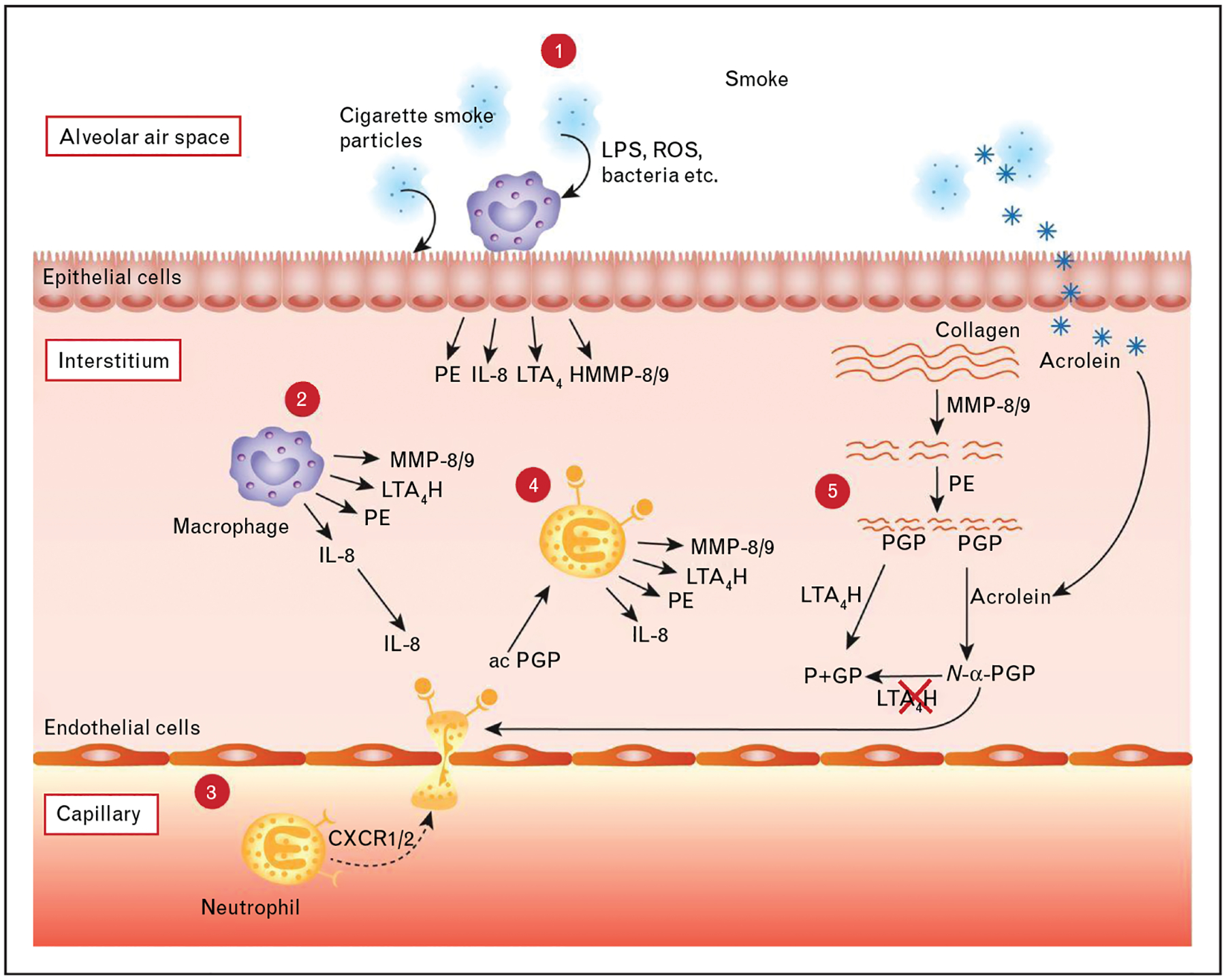FIGURE 3.

PGP pathway. 1: Cigarette smoke inhalation causes tissue resident cells such as macrophages and epithelial cells to release several mediators, including prolyl endopeptidase (PE), IL-8, leukotriene A4 hydrolase (LTA4H) and matrix metalloproteinase (MMP)8/9. 2 and 3: The neutrophilic chemokine IL-8 attracts neutrophils from the capillary via binding with CXCR1/2. 4 and 5: Neutrophils subsequently release MMPs and PE, which cleave collagen from the extracellular matrix to release the tripeptide and neutrophil chemoattractant PGP. LTA4H can cleave and inactivate PGP. However, components of cigarette smoke, such as acrolein, inhibit LTA4H and can acetylate the PGP to form the more potent acetylated form of PGP (N-α-PGP). Moreover, N-α-PGP cannot be cleaved by LTA4H. PGP-generating enzymes can now be released by neutrophils after recruitment and activation by PGP: a self-sustaining neutrophilic inflammation. ROS reactive oxygen species; P+GP, proline + glycine-proline. IL-8, interleukin-8; PGP, proline-glycine-proline. Figure and legend reproduced from [43].
